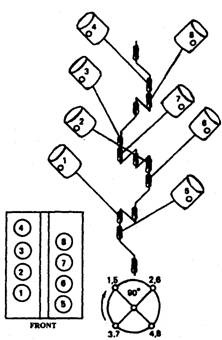This term is confusing me a little and I wanted to make sure I understood it correctly.
Based on my understanding of the Wikipedia article, it looks to me like a crank throw is what allows the piston to translate (or "throw") linear motion to rotation of the crankshaft.
Also, what I infer from this article on firing orders is the number of unique crankpin offsets in a complete cycle will determine the number of crank throws that the engine is characterized by.
So a flat-plane V8 has two crank throws, while a cross-plane V8 has four crank throws. Have I correctly understood it?
Flat-plane V8
Cross-plane V8




